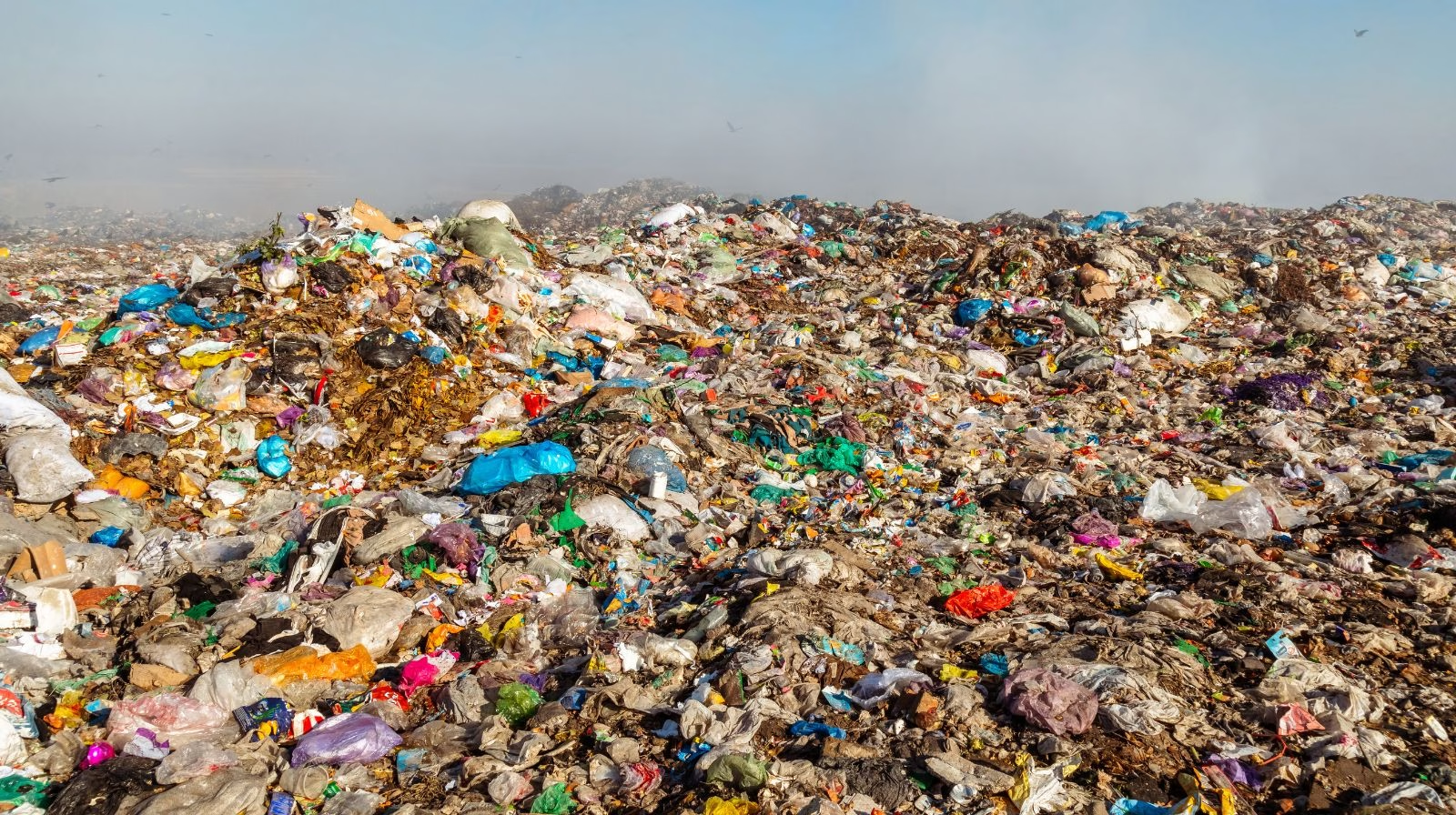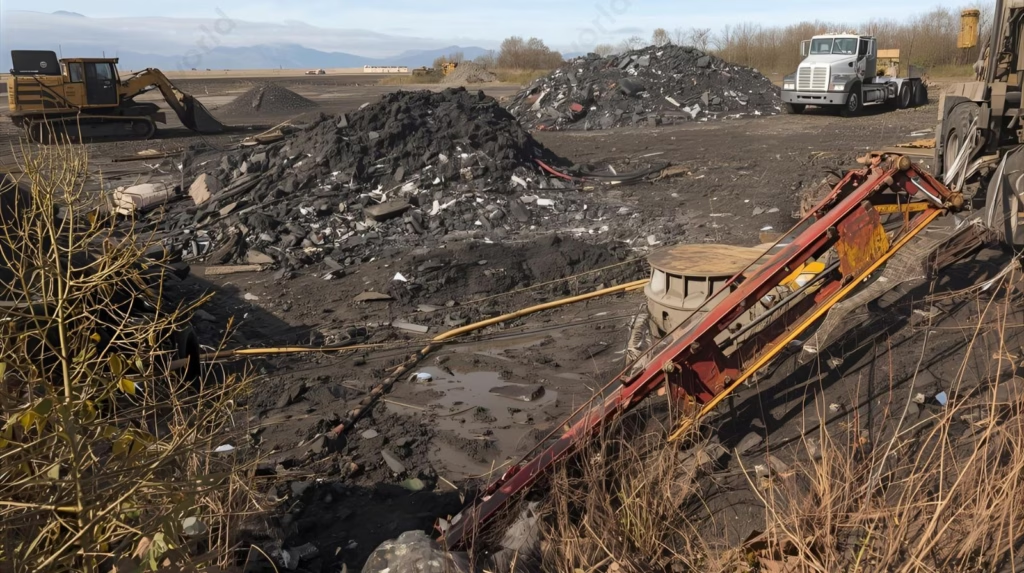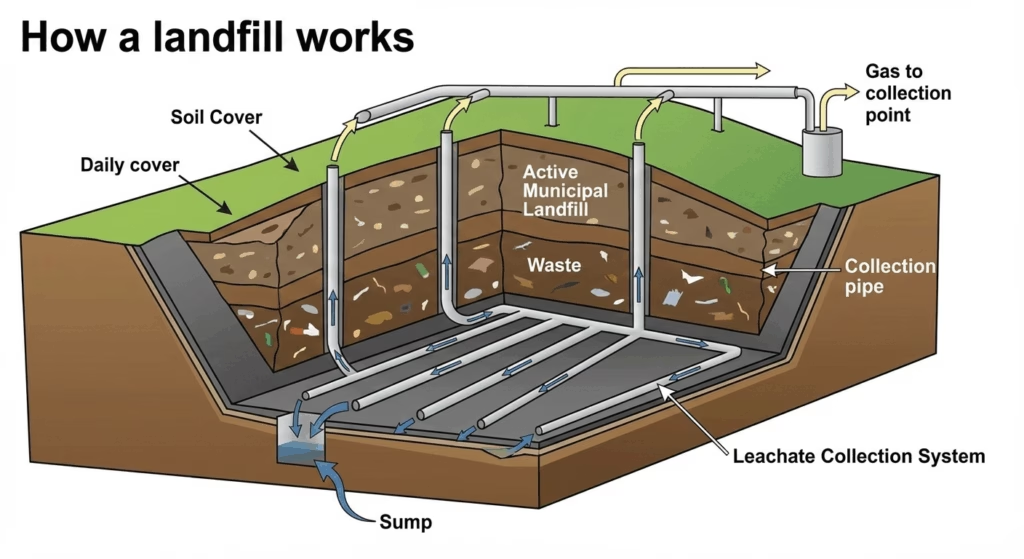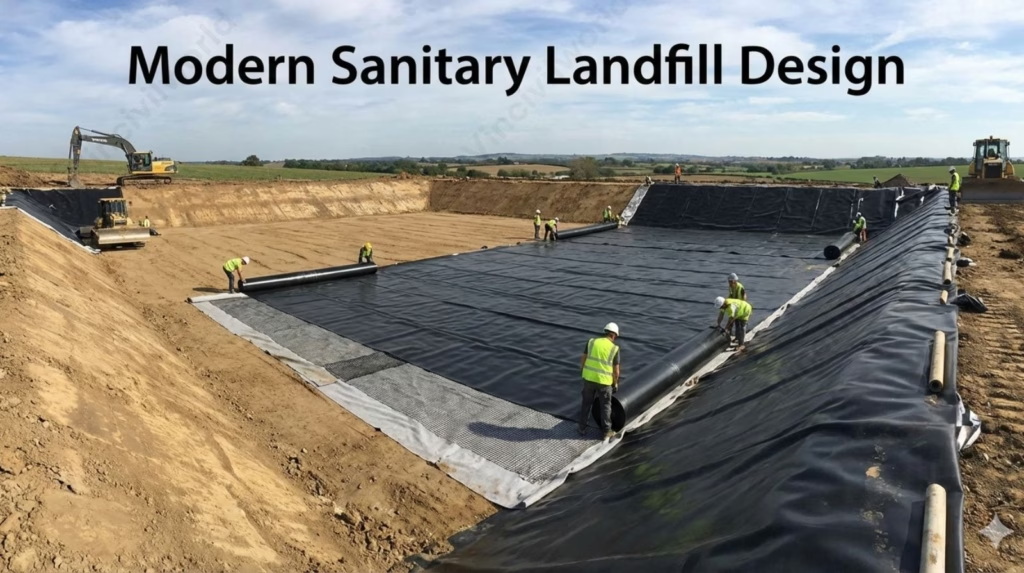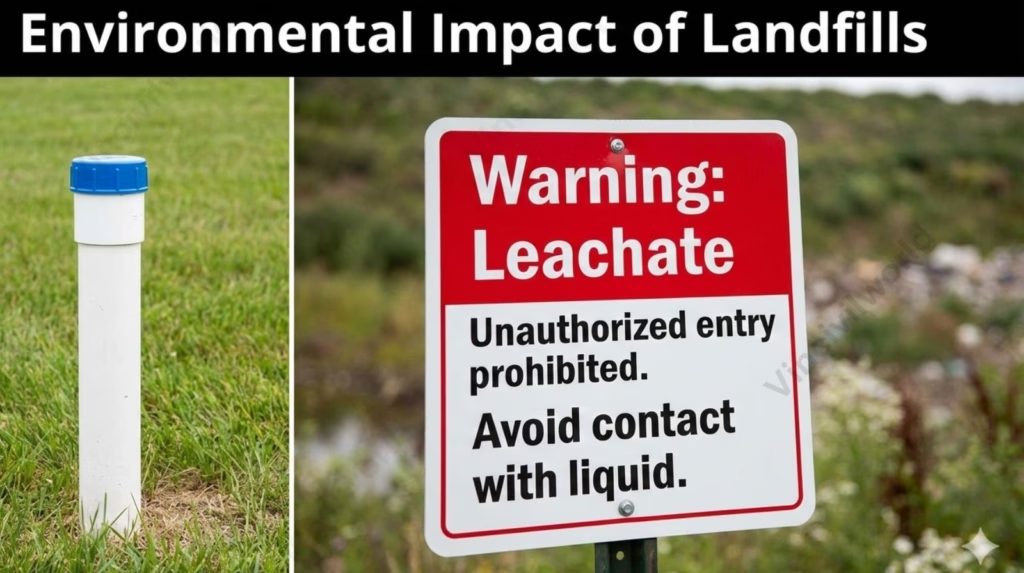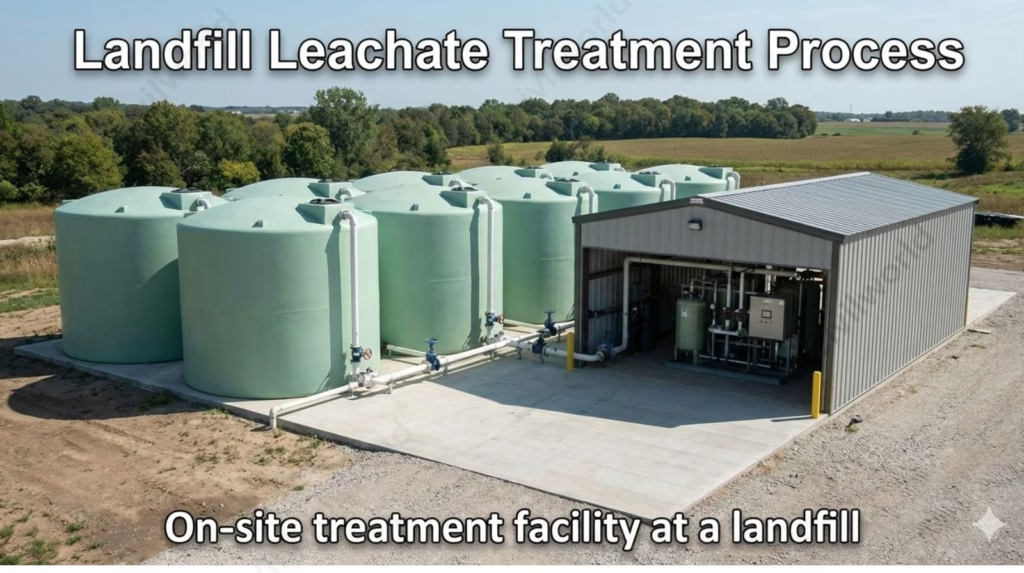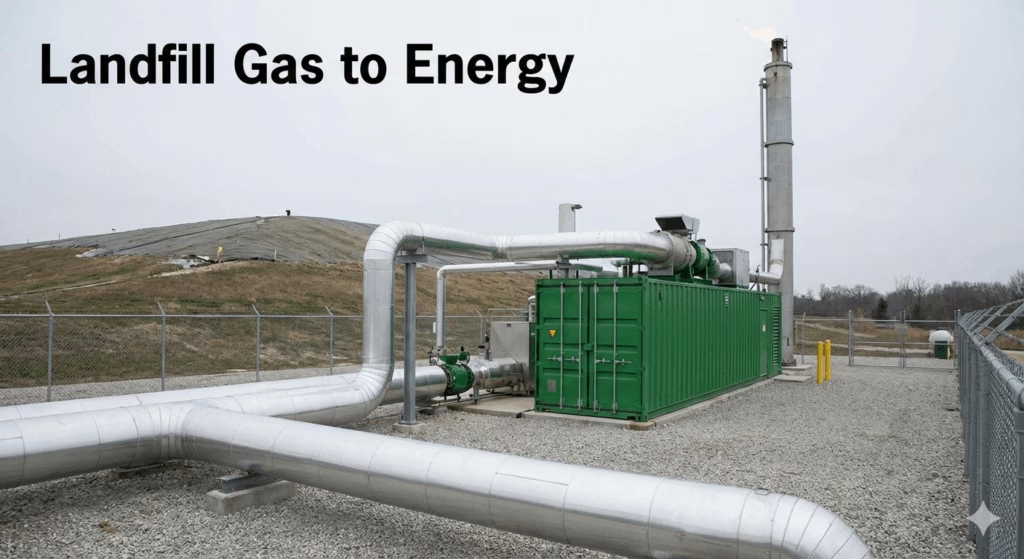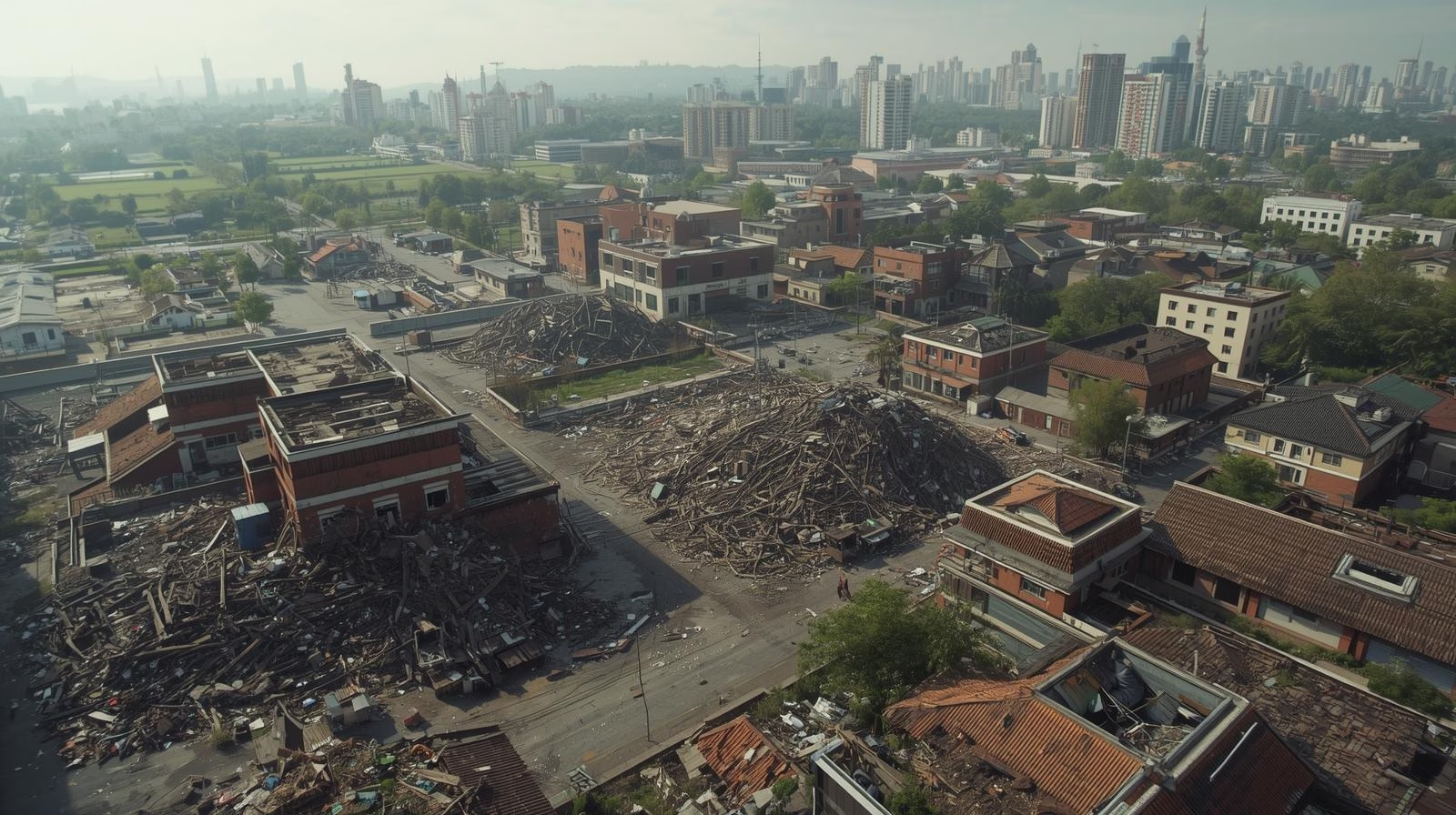How a landfill works goes far beyond the old concept of a simple town dump; it is a complex, highly engineered feat designed to manage our waste responsibly. This comprehensive guide explores the intricate details of modern sanitary landfill design, created specifically to mitigate the potential negative environmental impact of landfills. We will walk through the entire timeline, from siting to closure, detailing the various landfill life cycle stages. Along the way, you will learn about critical operational elements, such as the crucial landfill leachate treatment process used to protect groundwater, and innovative sustainability efforts like converting methane through landfill gas to energy systems.
Landfills are a regular occurrence all over the world, owing to the rising volume of trash generated by our homes, schools, offices, hospitals, and markets. The rising number of landfills around the world is largely due to increased urbanisation and population growth rates.
As the world’s population and cities develop, so does the need for goods and commodities. Consequently, the amount of solid trash produced also increases. They eventually reach landfills. In this blog, let’s go on a trip to a landfill and understand its operation, lifecycle and impacts
Table of contents
What are Landfills and how it works ?
Landfills are places where we dispose of trash, garbage, and other solid wastes. They have traditionally been the most frequent method of disposing of solid garbage. In the landfills, the waste is either buried or piled in heaps. The garbage in these heaps is a combination of residential and commercial waste.
Landfills commonly use either of the following techniques for waste disposal:
- Landraising – This technique involves depositing trash directly on the ground.
- Landfilling – This technique involves filling a hole in the ground with the rubbish.
Causes of Landfills
With the rise in land utilization and pollution, landfills also saw a rise in the number. Let’s see the causes of land pollution. Before jumping into the next section make sure that you go through Land Pollution Causes -Top 6 causes explained.
Solid Waste – Major landfill material
Wood, paper, plastic, broken furniture, glass, grounded cars, old electronic items, and hospital and market garbage are examples of solid waste materials. Because most of these waste materials are non-biodegradable, they heap in the landfills where they stay for years.
Agricultural Waste – Landfill material
Agricultural wastes comprise waste products such as animal dung, crop residue, and agricultural garbage. Solid wastes such as animal manure and other agricultural wastes are collected and disposed of in landfills.
Now, let’s try to understand how landfills operate.
Also read: What is Sewage? – Sources, Treatment and Quality Indicators
Landfills Operation
- On arrival waste collection vehicles move to a scale or weighbridge to weigh their loads.
- Workers inspect loads for wastes that do not meet the landfill’s waste-acceptance standards.
- The garbage collecting vans next travel to the tipping face or working front and drop their contents.
- Compactors or bulldozers redistribute and compact the garbage on the working face.
- The vans may pass through a wheel-cleaning facility before leaving the landfill’s borders. If necessary, they return to the weighbridge without any load for re-weighing.
Modern Sanitary Landfill Design
A modern sanitary landfill design constitutes a pit with a sealed bottom where rubbish is buried and compacted in layers to make it more solid. In sanitary landfills, waste decomposition is a complex process involving the sequential and/or simultaneous occurrence of a variety of chemical and biological reactions. These reactions result in the breakdown of the waste materials. The organic fractions of MSW break down quickly, resulting in landfill gases and liquids.
The amount of biodegradable organic matter present in the waste, the availability of moisture and nutrients required for biodegradation, and final landfill closure measures all influence the duration of individual phases, as well as the nature and quantity of various landfill gases generated during each phase.
Over the lifetime of a Modern Sanitary Landfill Design, five successive phases can be distinguished based on the formation of major landfill gases and physicochemical conditions. Let’s have a closer look at each of the Landfill Life Cycle Stages.
Landfill Life Cycle Stages
The progression of a modern waste facility is defined by distinct Landfill Life Cycle Stages. Moving through these Landfill Life Cycle Stages involves complex steps ranging from initial siting and active operation to final secure closure and decades of post-closure monitoring.
Phase 1 – Initial adjustment of landfills
- The first phase of a sanitary landfill’s life cycle.
- During this phase, the organic constituents in municipal solid waste begin rapid microbial breakdown, typically under aerobic conditions shortly after disposal. This is one of the first steps in how a landfill works, where biodegradable materials are decomposed naturally, generating heat and initiating settlement. As oxygen depletes, the system gradually transitions into anaerobic decomposition, producing gases and leachate that must be properly managed for environmental safety.
- This phase usually lasts a short time from the moment of waste dumping until around a week.
- The oxygen-rich air trapped within the landfill promotes aerobic reactions.
- Microorganisms are the primary agents in biodegradation. The soil that is utilised for daily cover serves as the primary source of microbes.
- Sludge from wastewater treatment plants is sometimes recirculated. Leachate also serves as a source of the microbial population.
Phase 2 – Transition Phase of landfills
- The landfill undergoes a transition from an aerobic to an anaerobic state in this phase.
- Because of the high consumption of oxygen during Phase I, and its subsequent depletion, the situation is mainly anaerobic. The oxidation/reduction potential of the waste helps to track the change from aerobic to anaerobic conditions.
- In the absence of oxygen, the terminal electron acceptors are nitrate and sulphate in the chemical reactions that occur. Hence the landfill gas consists mainly of nitrogen and hydrogen sulphide.
- Due to the formation of organic acids and higher CO2 concentrations within the landfill, any leachate created during the transition period is often acidic.
- The pH during this phase is normally between 6 and 7.
- This phase can last between 1 to 6 months.
Phase 3 – Acid Formation Phase of landfills
- In the acid formation phase, the biodegradable component of the solid waste begins to hydrolyze. As a result, there is a rapid accumulation of volatile fatty acids (VFAs) in the leachate.
- The increasing organic acid concentration lowers the pH of the leachate from 7.5 to 5.6.
- The leachate has the potential to dissolve many inorganic elements, including heavy metals, due to the decreased pH, making it very poisonous.
- This phase lasts anything from 3 months to 3 years on average.
- The further breakdown of intermediate chemicals, such as VFAs, generate a significant amount of chemical oxygen demand during this phase.
- High VFA concentrations raise both the biochemical oxygen demand (BOD) and VOA levels. This triggers H2 generation by fermentative bacteria and promotes the growth of H2-oxidizing bacteria.
- Acetic acid (C2H4O2), CO2, and hydrogen gas are produced from long-chain volatile organic acids (VOAs) towards the end of this phase.
Methane Fermentation in landfills – Phase 4
- Methanogenic bacteria convert the intermediary products of the acid formation phase such as acetic, propionic, and butyric acids to CH4 and CO2.
- As methanogens continue to digest the VFAs, the pH of the landfill water returns to neutrality.
- The organic strength of the leachate, expressed in terms of COD, drops rapidly as the rate of CH4 and CO2 gas generation rises.
- This is the most time-consuming part of the breakdown process. The typical duration of this phase is approximately 8 to 40 years,
Phase 5 – Final maturation and stabilization of landfills
- This is the final stage of a sanitary landfill’s life cycle.
- Once the microorganisms finish consuming easily biodegradable organic materials they begin digesting other difficult to biodegrade materials.
- As the amount of available biodegradable organic matter considerably decreases during the maturation phase, the rate of landfill gas generation drops dramatically from prior phases.
- This phase’s leachate frequently contains humic and fulvic acids. The main gases produced at this period are CH4 and CO2.
Environmental Impact of Landfills
Landfills all over the world have social, economic and environmental impacts. Below mentioned are a few of them:
Landfill Leachate Treatment Process
When rain falls on open landfills, the water percolates through the waste, becoming contaminated with suspended and dissolved material. This process creates leachate, a primary driver of the negative environmental impact of landfills and a key part of how a landfill works. To mitigate this, all modern landfills use a combination of impermeable liners several metres thick, geologically stable sites, and collection systems to contain the toxic liquid. Most landfills use clay as the liner material, but geosynthetic membrane liners also find wide application in sanitary landfills.
Following collection, the leachate can be treated and evaporated. Once a landfill is full, authorities seal it to prevent precipitation intrusion and the development of new leachate. However, it is widely accepted that any landfill liner will eventually leak. This failure leads to the contamination of groundwater in the long run, representing a significant and lasting environmental impact of landfills.
Landfill Gas to Energy
Within the complex structure of a modern landfill, the decomposition of organic waste, such as rotting food, is a continuous and dynamic process. This breakdown occurs through both aerobic (oxygen-using) and anaerobic (oxygen-absent) digestion simultaneously in different regions of the waste pile. The resulting gaseous mixture varies in constitution based on factors like the landfill’s age, moisture content, and specific waste types.
On average, this gas is composed of roughly 50% methane (CH4) and slightly less than 50% carbon dioxide (CO2), alongside trace amounts of other gases like nitrogen and hydrogen sulphide. While CO2 is a concern, the high concentration of methane presents a unique opportunity because methane is a potent fuel source. Recognizing this potential, many modern facilities have shifted away from simply venting or flaring this gas. Instead, they implement landfill gas to energy initiatives. By actively capturing this methane, efficient landfill gas to energy systems convert what was once a waste byproduct into a valuable resource used to generate electricity or heat, significantly improving the site’s sustainability.
Vectors
Landfills serve as a breeding ground for mosquitoes, flies and rats. Because vectors such as rodents and flies can spread dangerous diseases, poorly managed landfills can become a nuisance. The application of daily cover can help to reduce the occurrence of such vectors.
Key Takeaways
- Modern landfills are complex systems designed to manage waste and mitigate environmental impact, unlike traditional dumps.
- Landfills operate through various stages, including waste weighing, inspection, and compacting processes.
- The landfill life cycle consists of five phases, from initial adjustment to final maturation, each affecting gas generation and leachate composition.
- Landfill leachate can contaminate groundwater, making its management crucial for environmental safety.
- Landfill gases, primarily methane and carbon dioxide, are produced during waste decomposition and can be harnessed for energy.
Conclusion
Understanding precisely how a landfill works today requires recognizing them as complex, engineered facilities. When properly planned and managed using modern sanitary landfill design, they remain the most cost-effective method for disposing of municipal solid waste. Adhering to strict standards throughout all landfill life cycle stages—from site selection to daily operation—is essential to ensure a safe facility and minimize the negative environmental impact of landfills. This includes implementing a rigorous landfill leachate treatment process to prevent groundwater pollution. Furthermore, advanced facilities now capture methane emissions through landfill gas to energy systems, turning a potential greenhouse gas hazard into a useful power source.
In case of any queries feel free to ask in the comments section. Happy Learning.

